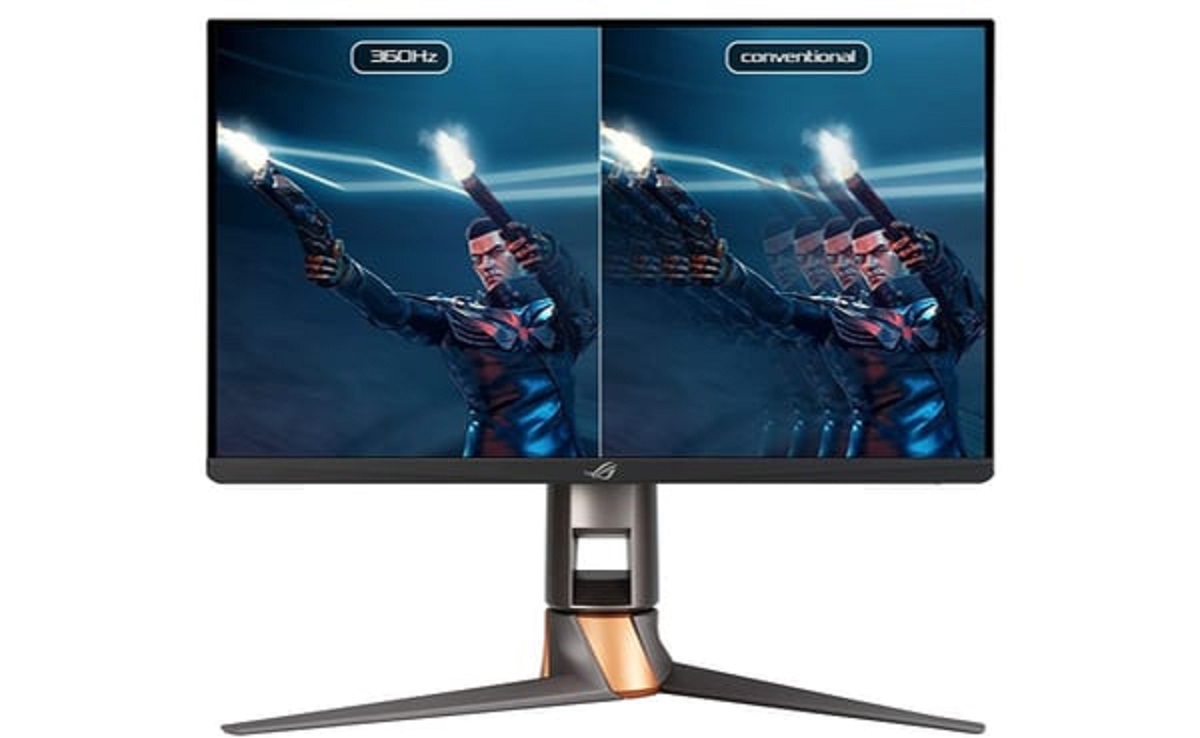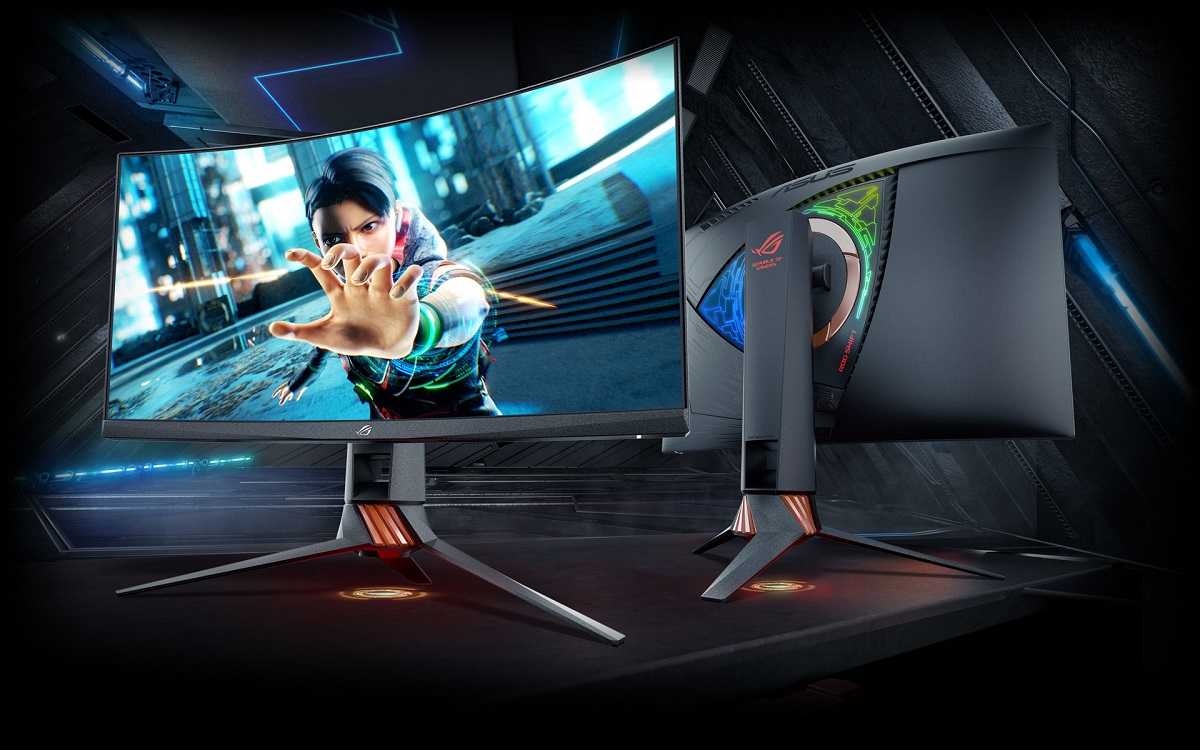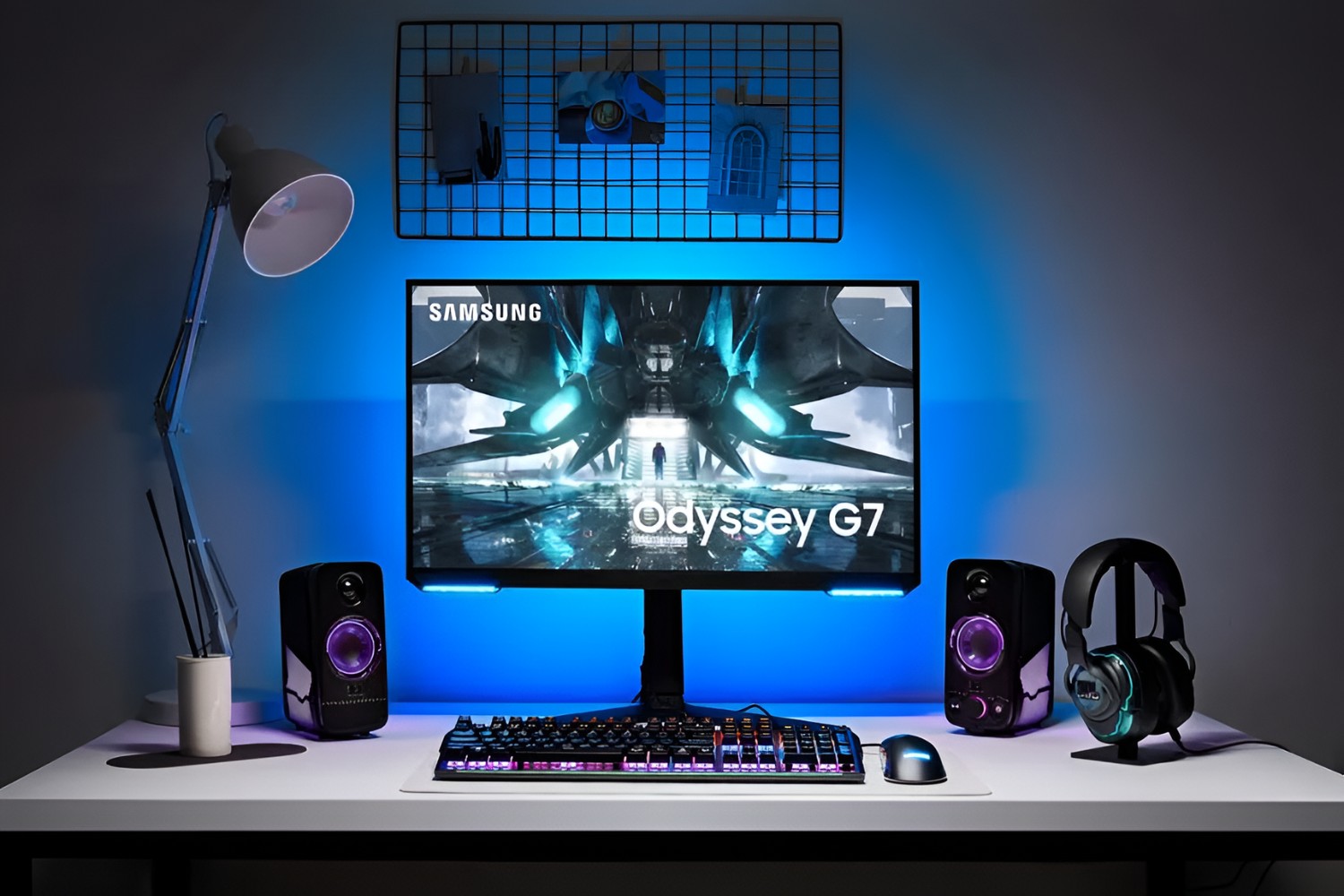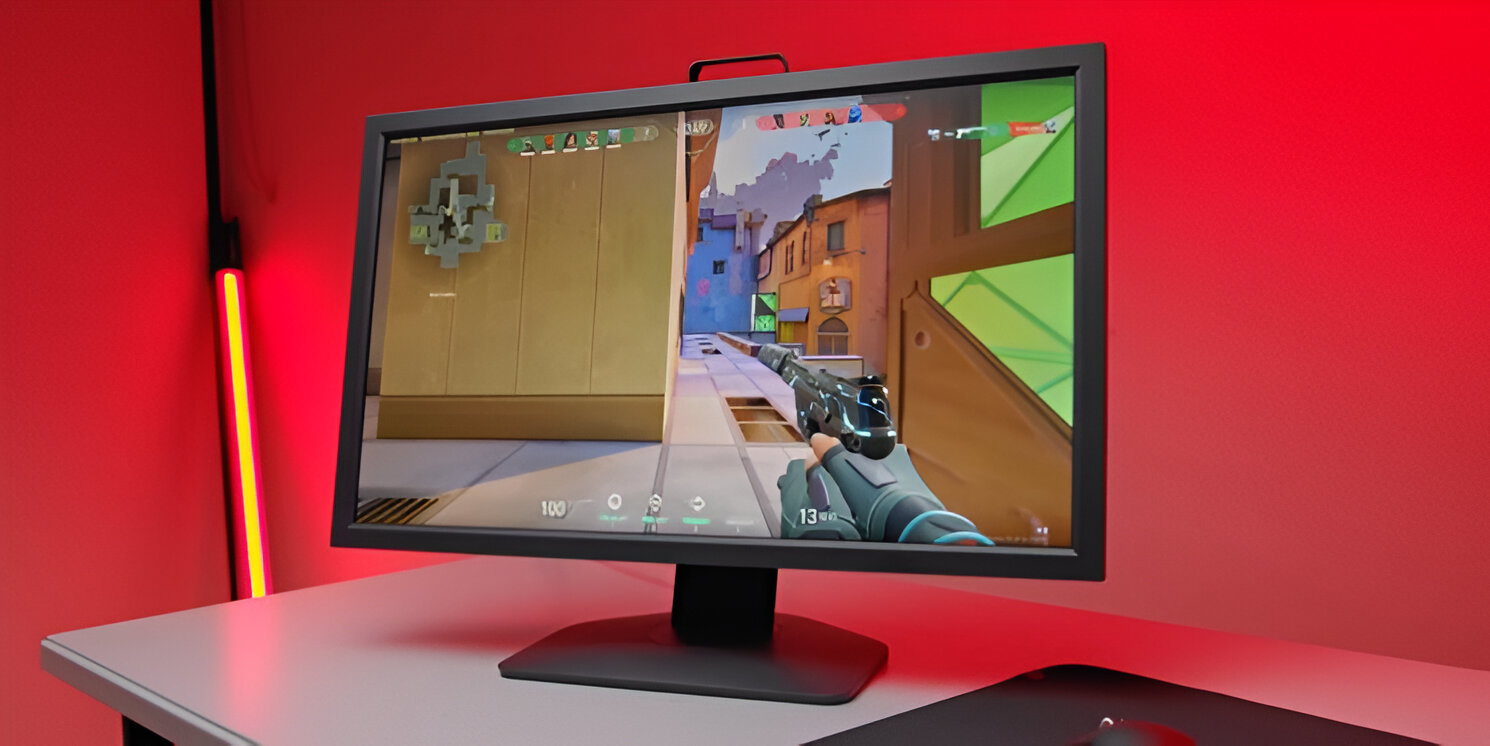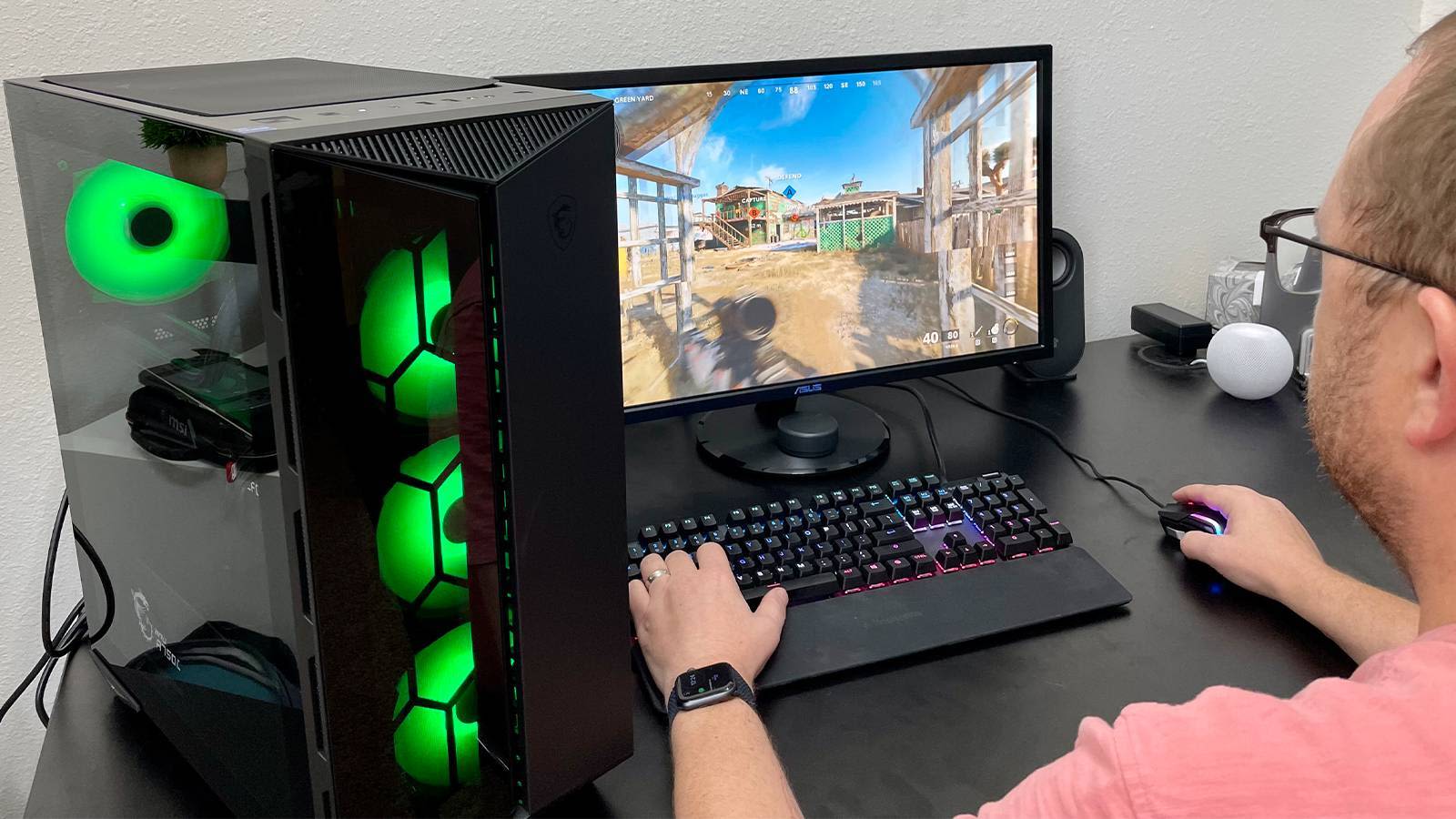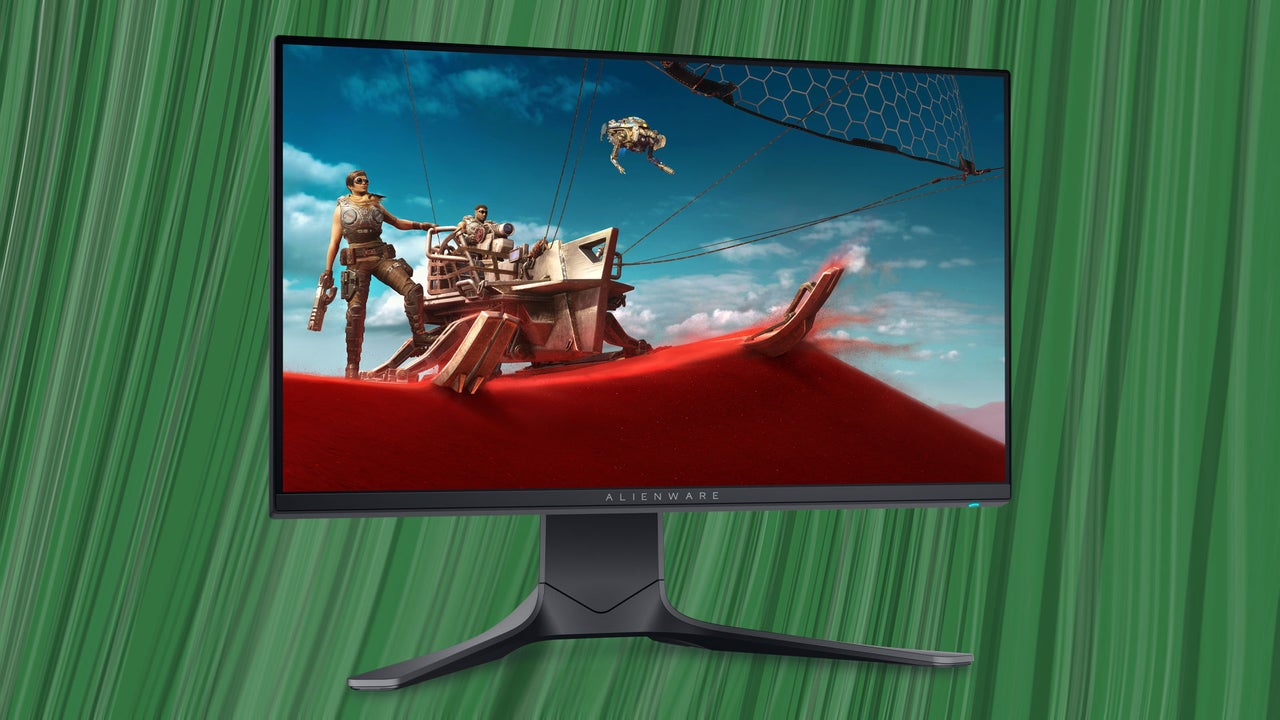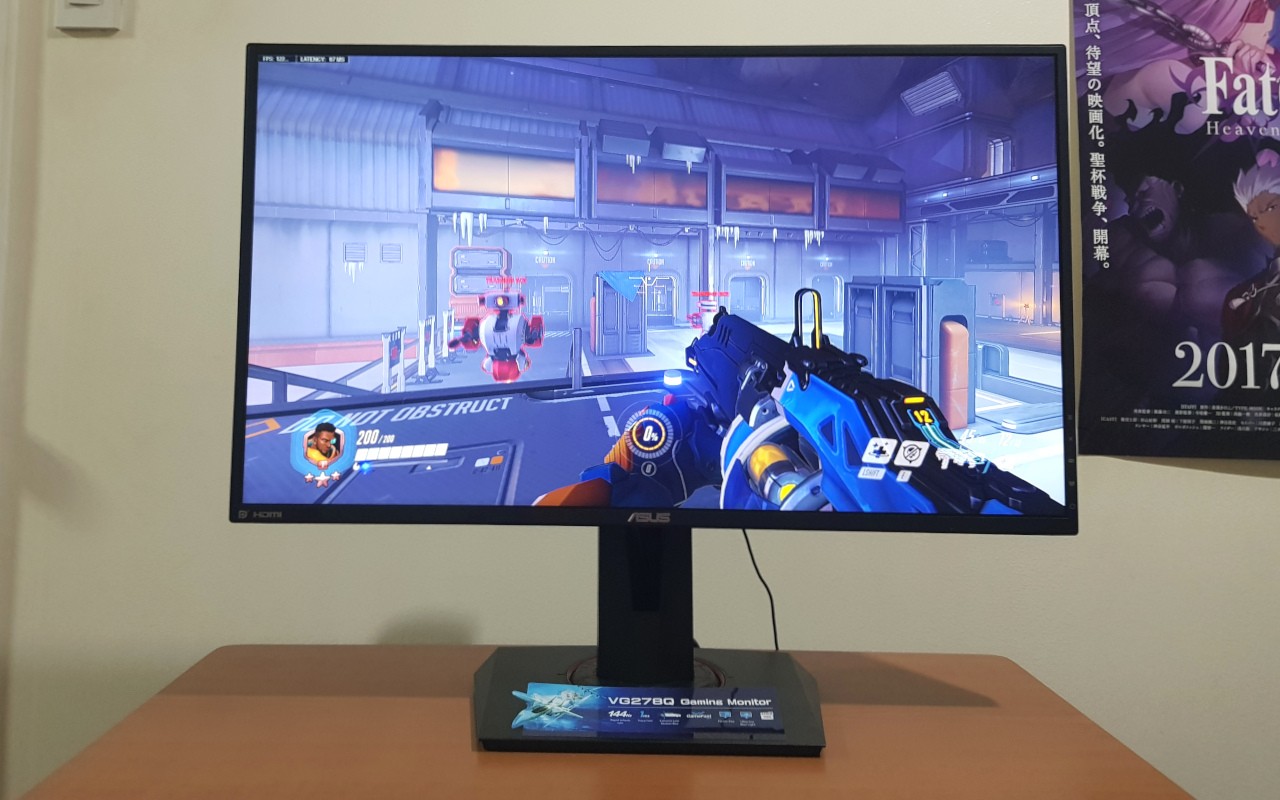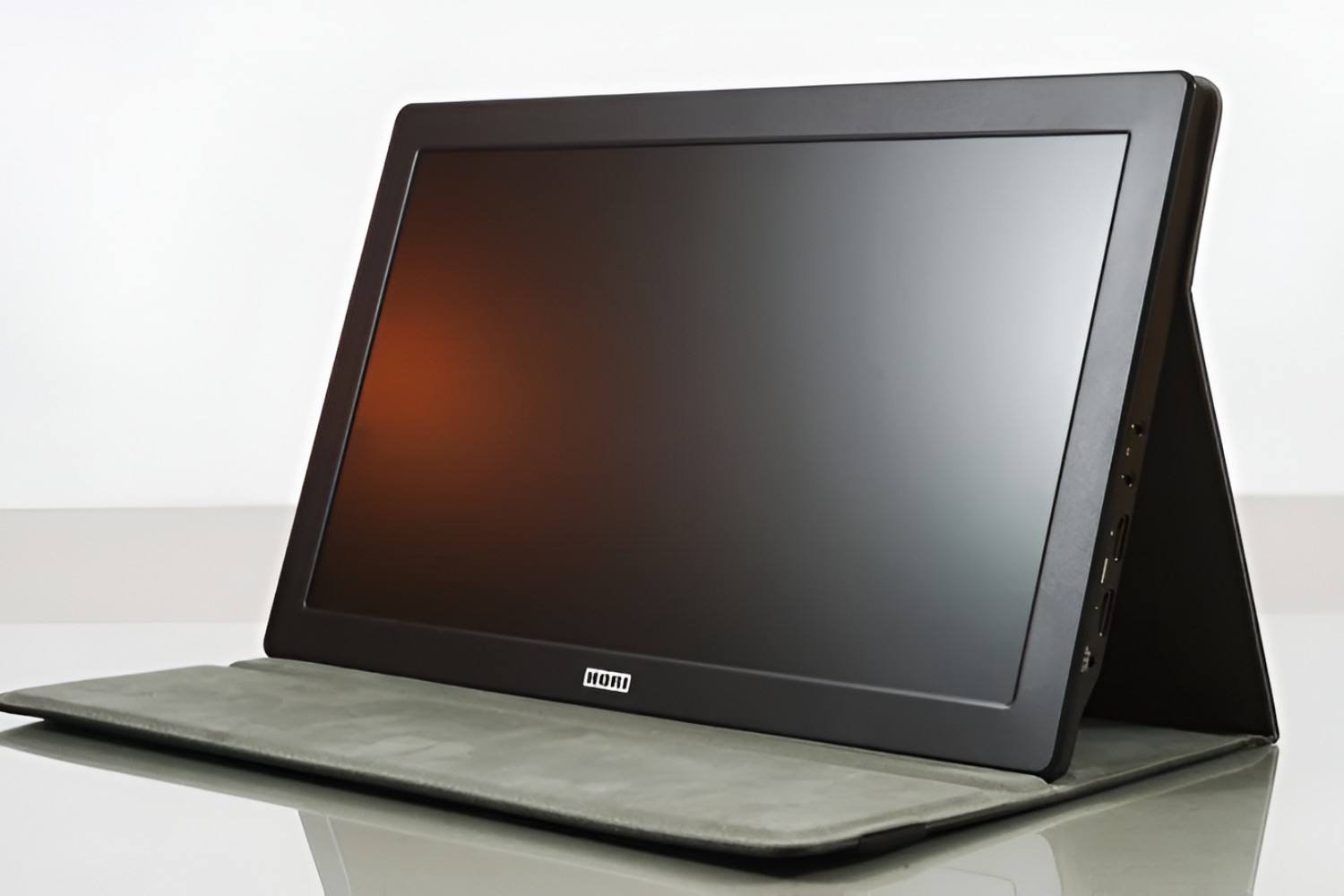Introduction
Welcome to the world of monitors, where Hz—short for Hertz—plays a crucial role in determining their performance. If you’ve ever shopped for a monitor, you may have noticed terms like “60Hz,” “144Hz,” or even “240Hz” thrown around. But what exactly is Hz and why does it matter in a monitor?
Hz refers to the refresh rate of a monitor, which is a measure of how many times per second the screen can update the image it displays. It is essentially the number of frames the monitor can display in one second. A higher Hz value means a faster refresh rate, allowing for smoother and more fluid visuals.
Why does Hz matter? Well, the refresh rate of a monitor affects how smoothly motion is displayed on screen. Imagine watching a fast-paced action scene in a movie or playing a high-intensity video game. A higher refresh rate ensures that the movements appear more natural and realistic, while a lower refresh rate can lead to motion blur and make the visuals appear choppy.
To understand the significance of Hz in a monitor, it’s important to delve into the concept of refresh rate. The refresh rate, measured in Hertz, represents the number of times a display refreshes its image every second. For example, a 60Hz monitor refreshes the image 60 times per second. Each refresh presents a new frame, resulting in smoother and more fluid motion.
Higher refresh rate monitors, such as 144Hz or 240Hz, offer even more frequent updates, providing an even smoother and more responsive experience. These monitors are particularly popular among gamers and professionals who prioritize smooth gameplay and quick reactions.
While a higher refresh rate generally improves the visual experience, it’s worth noting that not all users will notice a significant difference between various refresh rate options. Casual users who primarily engage in everyday tasks like web browsing, email, or document editing may not require a high refresh rate monitor.
In the following sections, we’ll explore the benefits of higher refresh rate monitors, considerations when choosing the right Hz for your needs, and how Hz can impact gaming performance, motion blur, and more. By the end, you’ll have a better understanding of Hz and the vital role it plays in your monitor’s performance.
What Is Hz?
Hz, which stands for Hertz, is a unit of measure that represents the frequency of a phenomenon. In the context of monitors, Hz refers to the refresh rate—a measurement of how many times per second the screen can refresh and display a new image.
The term “refresh rate” indicates the number of frames the monitor can display in one second. Each frame contains a complete image, and when multiple frames are displayed rapidly in succession, they create an illusion of smooth motion. Hz tells us how many of these frames or images can be displayed in one second.
For example, a monitor with a refresh rate of 60Hz means it can display 60 frames per second. This means the monitor is capable of refreshing its image 60 times in a single second. Similarly, a monitor with a refresh rate of 144Hz can refresh its image 144 times per second.
Higher refresh rates, such as 144Hz or even 240Hz, are becoming increasingly popular as they provide smoother and more fluid visuals. With more frames being displayed in a second, there is less motion blur, resulting in a clearer and more lifelike experience.
It’s worth noting that the refresh rate of a monitor is not the same as its response time. Response time refers to how quickly a pixel on the screen can change from one color to another, while refresh rate refers to how often the entire screen can be refreshed with a new image.
The refresh rate of a monitor is determined by its internal hardware and is fixed for each model. While some monitors may have customizable settings that allow you to adjust the refresh rate, most monitors have a specific, predetermined refresh rate that cannot be changed by the user.
Hz is an important factor to consider when choosing a monitor, as it directly impacts the visual experience. A higher refresh rate generally results in smoother motion, reduced motion blur, and an overall more enjoyable viewing experience, especially during fast-paced activities like gaming or watching action-packed movies.
In the next section, we’ll explore why Hz matters in a monitor and how it can affect your overall experience. Understanding the significance of Hz will help you make an informed decision when selecting a monitor that best suits your needs.
Why Does Hz Matter in a Monitor?
Hz plays a crucial role in determining the performance and visual quality of a monitor. Let’s delve into why Hz matters and how it can significantly impact your viewing experience.
The refresh rate of a monitor, measured in Hz, determines how many times per second the screen refreshes and displays a new image. This refresh rate affects how smoothly motion is displayed on the screen. A higher Hz value means a faster refresh rate, allowing for smoother and more fluid visuals.
When watching videos, playing games, or even scrolling through websites, a higher refresh rate translates to a more seamless and immersive experience. With a higher Hz monitor, you’ll notice less motion blur and improved clarity in fast-moving scenes, resulting in a more realistic viewing experience.
For gamers, a high refresh rate monitor is even more important. It enables smoother gameplay and reduces input lag, which can be crucial in fast-paced competitive games. With a higher refresh rate, the screen refreshes more frequently, ensuring that your actions and movements are displayed with minimal delay.
Moreover, a higher Hz monitor can also reduce eye strain and fatigue, especially during long periods of computer usage. The smooth visuals and reduced flickering of a high refresh rate display can help alleviate eye strain, making it more comfortable to work or play for extended periods.
However, it’s essential to note that the benefits of a higher refresh rate monitor may not be as noticeable to everyone. If you primarily use your computer for everyday tasks like web browsing, email, or word processing, a high refresh rate monitor may not provide significant advantages over a standard 60Hz monitor.
Nevertheless, if you engage in graphic design, video editing, or any visually demanding work, a higher refresh rate monitor can greatly enhance your productivity and provide a more enjoyable working experience. The smoothness and fluidity of a high refresh rate display allow for better color accuracy, precise image editing, and seamless video playback.
In summary, Hz matters in a monitor because it directly affects the visual quality, motion smoothness, and overall user experience. A higher refresh rate translates to smoother visuals, reduced motion blur, and improved responsiveness, making it particularly beneficial for gamers and visually demanding tasks. However, for casual users, a standard 60Hz monitor may be sufficient for everyday tasks.
Understanding Refresh Rate
Refresh rate is a fundamental aspect of monitors that determines how many times per second the screen can refresh and display a new image. A higher refresh rate results in smoother and more fluid visuals, while a lower refresh rate may lead to motion blur and a choppier visual experience.
The refresh rate of a monitor is measured in Hertz (Hz), indicating the number of frames the monitor can display in one second. Each frame contains a complete image, and when multiple frames are displayed rapidly in succession, they create the illusion of motion.
For example, a monitor with a refresh rate of 60Hz means it can refresh its image 60 times per second, displaying 60 frames in one second. This creates a relatively smooth visual experience, particularly when performing everyday tasks like web browsing or document editing.
However, for activities that involve fast motion, such as gaming or watching action-packed movies, a higher refresh rate can significantly enhance the visual quality. Monitors with refresh rates of 144Hz or even 240Hz can display 144 or 240 frames per second, respectively, resulting in smoother and more realistic motion without noticeable blur or stuttering.
It’s important to note that the benefits of a higher refresh rate are most noticeable when the content being displayed is capable of reaching those frame rates. If you’re watching a video or playing a game that is capped at 60 frames per second, a 144Hz monitor will not provide any additional visual benefits beyond what a 60Hz monitor can offer.
Moreover, the refresh rate of a monitor should not be confused with the frame rate of the content being played. The frame rate of a video or game depends on factors such as the hardware capabilities and settings. The refresh rate of the monitor determines how many of those frames are actually displayed on the screen.
It’s also worth noting that not all monitors have a fixed refresh rate. Some newer models offer variable refresh rate technology, such as NVIDIA’s G-Sync or AMD’s FreeSync. These technologies allow the monitor to dynamically adjust its refresh rate to match the output of the graphics card, reducing screen tearing and improving overall smoothness.
In summary, understanding refresh rate is crucial when selecting a monitor. A higher refresh rate can provide a smoother and more visually pleasing experience, particularly for fast-paced activities like gaming. However, it’s important to ensure that the content being displayed is capable of reaching those frame rates to fully benefit from the higher refresh rate. Variable refresh rate technologies can also enhance the visual quality by synchronizing the monitor with the graphics card output.
Benefits of Higher Refresh Rate Monitors
Upgrading to a higher refresh rate monitor, such as a 144Hz or 240Hz display, offers a range of benefits that can greatly enhance your visual experience. Let’s explore the advantages of these high refresh rate monitors:
- Smoother Motion: One of the significant advantages of higher refresh rate monitors is smoother motion. With more frames being displayed per second, the motion appears more fluid and natural, whether you’re watching a movie, playing a game, or even scrolling through webpages. The increased number of frames ensures that fast-paced actions and transitions are displayed without visible stuttering or jerkiness.
- Reduced Motion Blur: Higher refresh rates also help minimize motion blur. Motion blur occurs when fast-moving objects appear blurry or smeared, making the visuals less clear and harder to follow. By displaying more frames per second, a higher refresh rate monitor reduces motion blur, resulting in sharper and more detailed images.
- Improved Responsiveness: A higher refresh rate improves the monitor’s responsiveness, making it particularly beneficial for gamers. When playing fast-paced games, a higher refresh rate ensures that the actions you take with your keyboard, mouse, or controller are displayed on the screen with minimal delay. This can provide a competitive edge and a more immersive gaming experience.
- Enhanced Gaming Experience: Gamers often prioritize smooth gameplay and quick reactions. Higher refresh rate monitors deliver just that. The increased refresh rate allows for faster updates, providing more accurate and real-time visuals. This is especially crucial in fast-paced games where split-second decisions can make a difference, such as first-person shooters or racing simulations.
- Better Eye Comfort: While not exclusive to high refresh rate monitors, many users find that these displays offer better eye comfort. The reduced flickering and smoother motion can alleviate eye strain and fatigue, especially during extended periods of computer usage. This can be particularly beneficial for professionals who spend long hours working on their monitors or for individuals sensitive to flickering displays.
It’s important to note that the benefits of higher refresh rate monitors may vary depending on the content being displayed and your specific use case. For example, if the content being viewed or played is not capable of reaching the higher frame rates offered by the monitor, the benefits may not be as noticeable.
Additionally, not all users will perceive a significant difference between a 60Hz and a higher refresh rate monitor. Casual users who primarily engage in everyday tasks like web browsing, email, or word processing may not require the benefits offered by high refresh rate displays. However, for gamers, graphic designers, video editors, or anyone who values smooth motion and quick responsiveness, a higher refresh rate monitor can greatly enhance their visual experience and productivity.
Is Higher Always Better? Refresh Rate Considerations
While higher refresh rates often offer smoother and more visually pleasing experiences, the notion that “higher is always better” may not be applicable to all situations. Several factors need to be considered when determining the ideal refresh rate for your monitor:
- Content Compatibility: Consider the type and nature of the content you primarily consume. If you primarily engage in everyday tasks like web browsing, email, or document editing, a standard 60Hz monitor may be sufficient. However, if you are an avid gamer or work with visually demanding applications like video editing or 3D modeling, a higher refresh rate monitor can greatly improve your experience.
- Hardware Limitations: Ensure that your computer’s hardware can support a high refresh rate. To take full advantage of a monitor with a higher refresh rate, your graphics card and other system components should be capable of delivering the necessary frame rates. Investing in a high refresh rate monitor without compatible hardware may not yield the desired benefits.
- Budget Constraints: Higher refresh rate monitors tend to be more expensive than their lower refresh rate counterparts. Consider your budget and whether the incremental improvements in visual quality and responsiveness justify the additional cost. For some users, a standard 60Hz monitor might be sufficient for their needs without the need for a higher refresh rate.
- Personal Sensitivity: Some individuals may be more sensitive to refresh rate differences than others. While some people can easily perceive and benefit from higher refresh rates, others may not notice a significant difference or may even experience discomfort. It’s important to consider your own sensitivity to motion and whether the potential benefits of a higher refresh rate are worth it for you.
- Future-Proofing: It’s worth considering the future trajectory of your needs and technological advancements. If you anticipate engaging in more visually demanding activities or anticipate upgrading your hardware, choosing a monitor with a higher refresh rate may be a wise investment to future-proof your setup and ensure compatibility with upcoming content and technologies.
Ultimately, there is no universally correct refresh rate for everyone. The ideal refresh rate depends on your specific needs, preferences, and budget considerations. It’s advisable to evaluate your usage patterns, assess the content you engage with, and consider how much value you place on smoother motion and responsive visuals before making a decision.
By taking these factors into account, you can choose the most appropriate refresh rate for your monitor and strike a balance between optimal performance and budget considerations.
How to Choose the Right Hz for Your Needs
Choosing the right refresh rate, or Hz, for your monitor requires careful consideration of your specific needs and intended usage. Here are some factors to keep in mind when selecting the refresh rate that best fits your requirements:
- Intended Usage: Consider the primary purpose of your monitor. If you mainly engage in everyday tasks like web browsing, email, and document editing, a standard 60Hz monitor will suffice. However, if you are a gamer, graphic designer, or work with visually demanding applications, a higher refresh rate monitor—such as 144Hz or 240Hz—can significantly enhance your experience.
- Content Compatibility: Assess the type of content you consume regularly. For gaming, look for games that can reach higher frame rates or support the adaptive sync technologies like G-Sync or FreeSync. If you primarily watch movies or videos with locked frame rates, a higher refresh rate might not provide noticeable benefits. Matching the content you consume with the capabilities of the monitor will ensure you can fully maximize the benefits of a higher refresh rate.
- Hardware Requirements: Determine if your computer’s hardware—especially the graphics card—is capable of supporting a higher refresh rate. To benefit from a higher refresh rate monitor, your hardware must be able to produce the necessary frame rates. Ensure that your graphics card can deliver smooth gameplay or handle resource-intensive tasks at higher frame rates.
- Budget Considerations: Higher refresh rate monitors tend to be more expensive than their lower refresh rate counterparts. Evaluate your budget and determine how much value you place on the benefits of a higher refresh rate. If your budget is limited or your usage doesn’t necessitate a high refresh rate, a standard 60Hz monitor may be more cost-effective.
- User Sensitivity: Consider your own sensitivity to motion and visual smoothness. Some individuals may be more sensitive to higher refresh rates, while others may not notice a significant difference or may experience discomfort with exceptionally high refresh rates. It’s essential to understand your own preferences and sensitivity to motion when selecting the appropriate refresh rate.
By carefully assessing your specific needs, content compatibility, hardware capabilities, budget, and personal preferences, you can make an informed decision when choosing the right refresh rate for your monitor. Keep in mind that choosing a monitor with a higher refresh rate may provide smoother motion and enhanced visual quality but might not be necessary for everyone. It’s all about finding the right balance between your requirements and what your monitor can offer.
Common Hz Options in Monitors
Monitors come with different refresh rate options to cater to varying user needs and preferences. Let’s explore some of the common Hz options available in monitors:
- 60Hz: A monitor with a refresh rate of 60Hz is the most common and widely used option. It refreshes the image on the screen 60 times per second, providing a smooth viewing experience for everyday tasks like web browsing, email, and word processing. While it may not offer the same level of motion clarity as higher refresh rates, it is generally sufficient for casual users who don’t require advanced visual performance.
- 75Hz: Some monitors offer a refresh rate of 75Hz, providing a slight improvement over the standard 60Hz option. The higher refresh rate helps reduce motion blur and provides smoother visuals, making it a good choice for general multimedia consumption and casual gaming.
- 120Hz: Monitors with a refresh rate of 120Hz offer a significant leap in visual performance compared to 60Hz screens. The higher refresh rate allows for smoother motion, reduced motion blur, and improved responsiveness. They are particularly popular among gamers and those who seek a more immersive viewing experience.
- 144Hz: A refresh rate of 144Hz has become the standard for many gamers. With its even higher refresh rate, it provides an extremely smooth and fluid visual experience. Games with high frame rates can take full advantage of a 144Hz monitor, offering precise and responsive gameplay.
- 240Hz: Monitors with a refreshing rate of 240Hz are the top-of-the-line option primarily designed for professional gamers and competitive gaming. They deliver ultra-smooth motion and quick responsiveness, providing a competitive edge in fast-paced games where split-second decisions are crucial.
When choosing a monitor, it’s important to select a refresh rate that aligns with your needs and usage patterns. Casual users who primarily engage in everyday tasks may find a standard 60Hz or 75Hz monitor sufficient. Gamers and professionals who prioritize smooth motion and quick reactions may benefit from a higher refresh rate monitor, such as 120Hz, 144Hz, or 240Hz.
It’s worth noting that the capabilities of your hardware, the content you consume, and your personal sensitivity to motion are all factors to consider when selecting the appropriate Hz option. Additionally, newer technologies like adaptive sync (such as AMD’s FreeSync or NVIDIA’s G-Sync) can enhance the visual experience by synchronizing the monitor’s refresh rate with the output of your graphics card, reducing screen tearing and improving overall smoothness.
By understanding the different Hz options available in monitors and matching them to your specific needs, you can find the ideal refresh rate that elevates your visual experience and provides a more enjoyable and immersive viewing or gaming experience.
Does Hz Affect Gaming Performance?
Absolutely! The refresh rate, measured in Hz, plays a significant role in gaming performance. The higher the refresh rate of your monitor, the smoother and more responsive your gaming experience can be. Let’s explore how Hz affects gaming performance:
A higher refresh rate allows the monitor to refresh its image more frequently, resulting in smoother motion and reduced screen tearing. When playing fast-paced games, a higher refresh rate, such as 120Hz, 144Hz, or even 240Hz, ensures that the visuals are updated more rapidly. This means that the game’s movements and actions are rendered and displayed on the screen with minimal delay.
With a higher refresh rate, gamers can experience more fluid motion, enabling them to track fast-moving objects and react quickly to in-game events. This can be particularly important in competitive gaming, where split-second decisions can make a significant difference in the outcome.
In addition to smoother motion, a higher refresh rate also contributes to reduced input lag. Input lag refers to the delay between when a player makes an input through a keyboard, mouse, or controller, and when the corresponding action is displayed on the screen. With a higher refresh rate, such as 144Hz or 240Hz, the image on the display is updated more frequently, resulting in a shorter time delay between input and on-screen response.
It’s important to note that to truly benefit from a higher refresh rate monitor, your hardware needs to be capable of producing the necessary frame rates. Your graphics card and other system components should be capable of delivering smooth gameplay at higher frame rates to fully leverage the advantages of a high refresh rate monitor.
However, it’s crucial to consider that not all games offer high frame rates, especially if you have hardware limitations. Some older games or graphically demanding titles may not be able to reach the frame rates necessary to fully utilize a high refresh rate monitor. In such cases, a higher refresh rate may not provide noticeable benefits compared to a standard 60Hz monitor.
Furthermore, if your graphics card cannot consistently output the required frame rates, you may experience screen tearing or inconsistent performance. To mitigate screen tearing and other artifacts, technologies like AMD’s FreeSync or NVIDIA’s G-Sync can be used, which synchronize the refresh rate of the monitor with the output of the graphics card.
In summary, the refresh rate of a monitor significantly affects gaming performance. A higher refresh rate offers smoother motion, reduced input lag, and a more responsive gaming experience. However, it’s essential to ensure that your hardware can support higher frame rates and that the games you play can reach those frame rates. By matching the capabilities of your hardware and the content you engage with, you can optimize your gaming experience and take full advantage of a high refresh rate monitor.
Hz and Motion Blur
Motion blur refers to the phenomenon where fast-moving objects in a video game or movie appear blurry or smeared, making the visuals less clear and harder to follow. The refresh rate, measured in Hz, of a monitor can play a crucial role in reducing motion blur and enhancing the overall visual experience.
A higher refresh rate monitor, such as a 144Hz or 240Hz display, refreshes the image on the screen more frequently compared to a standard 60Hz monitor. This increased rate of refresh reduces the amount of time each frame is displayed, resulting in less perceived blur during fast-paced motion.
When the refresh rate is lower, there is a longer gap between each frame displayed on the monitor. This longer persistence of each frame contributes to motion blur, as the image remains on the screen for a longer duration, causing trailing artifacts and blurriness when objects move quickly.
By increasing the refresh rate, a higher number of frames are displayed every second, reducing the persistence of each frame and minimizing motion blur. This results in sharper and clearer visuals, allowing for better tracking of fast-moving objects and smoother gameplay.
It’s important to note that the impact of a higher refresh rate on motion blur may vary depending on the content being displayed and the capabilities of your hardware. Some games or movies may have built-in motion blur effects that are independent of the monitor’s refresh rate. Additionally, the response time of the monitor, which refers to how quickly pixels can change from one color to another, also affects motion clarity.
While a higher refresh rate can help reduce motion blur, it’s not a complete solution. Other factors, such as the game’s optimization, frame rate stability, and the quality of the monitor, all play a role in determining the overall motion clarity. It’s important to ensure that your hardware can consistently deliver the necessary frame rates and that the content is compatible with higher refresh rates to fully reap the benefits.
Additionally, technologies like motion interpolation or black frame insertion can further reduce motion blur by introducing additional frames or black frames between the original frames. These technologies can be found in certain monitors or enabled via software, but they may introduce artifacts or affect the overall brightness of the image.
In summary, a higher refresh rate monitor can help reduce motion blur by refreshing the image more frequently, resulting in less persistence of each frame. This leads to clearer and sharper visuals, allowing for better tracking of fast-moving objects in games or movies. However, it’s important to consider other factors like response time, game optimization, and content compatibility to achieve optimal motion clarity.
Conclusion
Understanding the significance of Hz, or refresh rate, in a monitor is essential for selecting the right display that meets your needs and enhances your visual experience. The refresh rate determines how many times per second the screen can refresh and display a new image, affecting the smoothness of motion and overall clarity of visuals.
Higher refresh rate monitors, such as 144Hz or 240Hz, offer benefits like smoother motion, reduced motion blur, and improved responsiveness, particularly important for gamers and those working with visually demanding applications. With more frames being displayed per second, these monitors provide a more fluid and immersive viewing or gaming experience.
However, it’s important to consider factors such as content compatibility, hardware requirements, budget considerations, and personal sensitivity to motion when choosing the right refresh rate for your monitor. Not all users will necessarily benefit from a higher refresh rate, as it depends on their specific needs and usage patterns. Casual users who primarily engage in everyday tasks may find a standard 60Hz monitor sufficient.
Additionally, it’s crucial to ensure that your hardware can support higher frame rates and that the content you engage with can reach those frame rates to take full advantage of a higher refresh rate monitor. Technologies like AMD’s FreeSync or NVIDIA’s G-Sync can further enhance the visual experience by synchronizing the monitor’s refresh rate with the output of the graphics card.
Ultimately, the right Hz for your needs will depend on your specific requirements and preferences. By considering all the factors discussed, you can make an informed decision when selecting a monitor and strike the ideal balance between smooth motion, responsiveness, and budget considerations.
Remember, Hz is an important aspect of a monitor’s performance, but it is not the sole determinant of visual quality. Your choice should encompass other features like resolution, panel type, response time, and connectivity options to ensure a well-rounded display that meets all your requirements.







